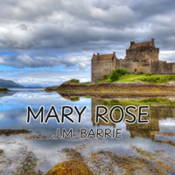
Explore this Show
Overview
Synopsis
On a small island in the Hebrides of Scotland, a young girl on holiday disappeared. Her parents and the village locals desperately searched for weeks with no sign of what may have happened to her--and suddenly, she returned, never knowing that she was gone.
A decade later, the girl Mary Rose falls in love with a young sailor named Simon. But before giving their blessing, Mary Rose’s parents share with Simon their terrible secret about the island and the mystery of their daughter. He promises to love and take care of Mary Rose, and is profoundly devoted to her--so much so that he (against better judgment) takes her back to the island that she had such fond memories of in her childhood. The island, while quaint and charming, is crawling with mystery and calls to Mary Rose yet again. She vanishes, and the world carries on for decades before she reappears, untouched by the passage of time.
From J.M. Barrie, the play Mary Rose explores the magic of eternal youth and the pain of losing loved ones. Popular when it was originally produced in 1920, and a ghost-story inspiration for Alfred Hitchcock himself, Mary Rose has proven to be a timeless classic through multiple revivals and adaptations throughout the last century.
Show Information
- Category
- Play
- Age Guidance
- Youth (Y)/General Audiences (G)
- Number of Acts
- 3
- First Produced
- 1920
- Genres
- Drama
- Settings
- Period, Multiple Settings
- Time & Place
- Sussex, England; Outer Hebrides, Scotland. Early 1900s-1920s.
- Cast Size
- medium
- Licensor
- None/royalty-free
- Ideal For
- College/University, Community Theatre, Professional Theatre, Regional Theatre, High School, Mostly Male Cast, Includes Young Adult, Late Teen, Adult, Elderly, Mature Adult Characters, Medium Cast
Context
Plot
Characters
| Name | Part Size | Gender | Vocal Part |
|---|---|---|---|
|
Lead |
Female |
Non-singer |
|
|
Lead |
Male |
Non-singer |
|
|
Supporting |
Male |
Non-singer |
|
|
Supporting |
Female |
Non-singer |
|
|
Supporting |
Male |
Non-singer |
|
|
Supporting |
Female |
Non-singer |
|
|
Supporting |
Male |
Non-singer |
|
|
Supporting |
Male |
Non-singer |
Songs
A song with an asterisk (*) before the title indicates a dance number; a character listed in a song with an asterisk (*) by the character's name indicates that the character exclusively serves as a dancer in this song, which is sung by other characters.
Monologues
Scenes
Key Terms
A specific form of language tied to a region or group, used to reveal a character’s identity, background, or class.
A Scottish term for an attendant or servant, especially one who assists in outdoor activities like hunting or fishing.
The process of obtaining legal rights to perform a play or musical, typically through a licensing agency. Licensing ensures that royalties are paid to authors and that productions follow approved versions of scripts and scores.
An extended speech delivered by a single character, either to another character or the audience. Monologues are used for character development and to reveal inner thoughts.
Written in a way that represents the sounds of speech.
Works not protected by copyright and available for free use or adaptation. Many classical plays, including Shakespeare's, fall into the public domain.
Videos
Quizzes
Themes, Symbols & Motifs
Sorry! We do not currently have learning modules for this guide.
Quote Analysis
Sorry! We do not currently have learning modules for this guide.
